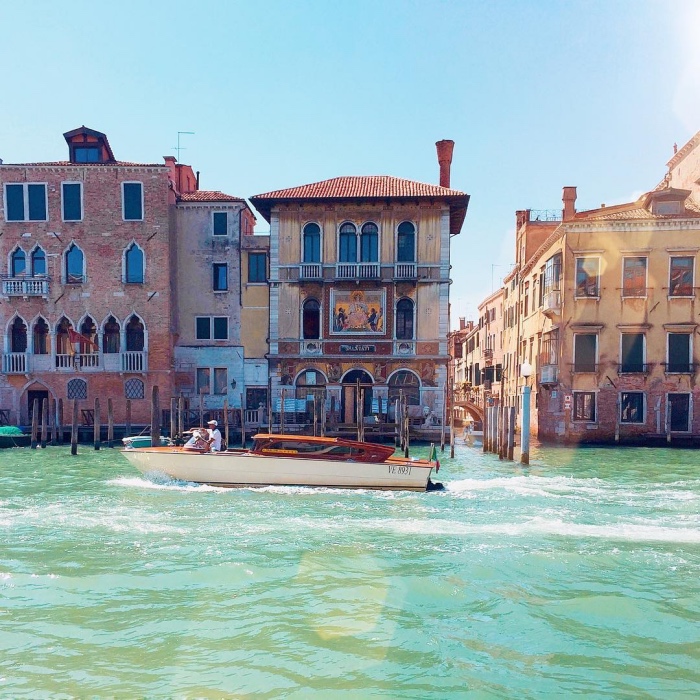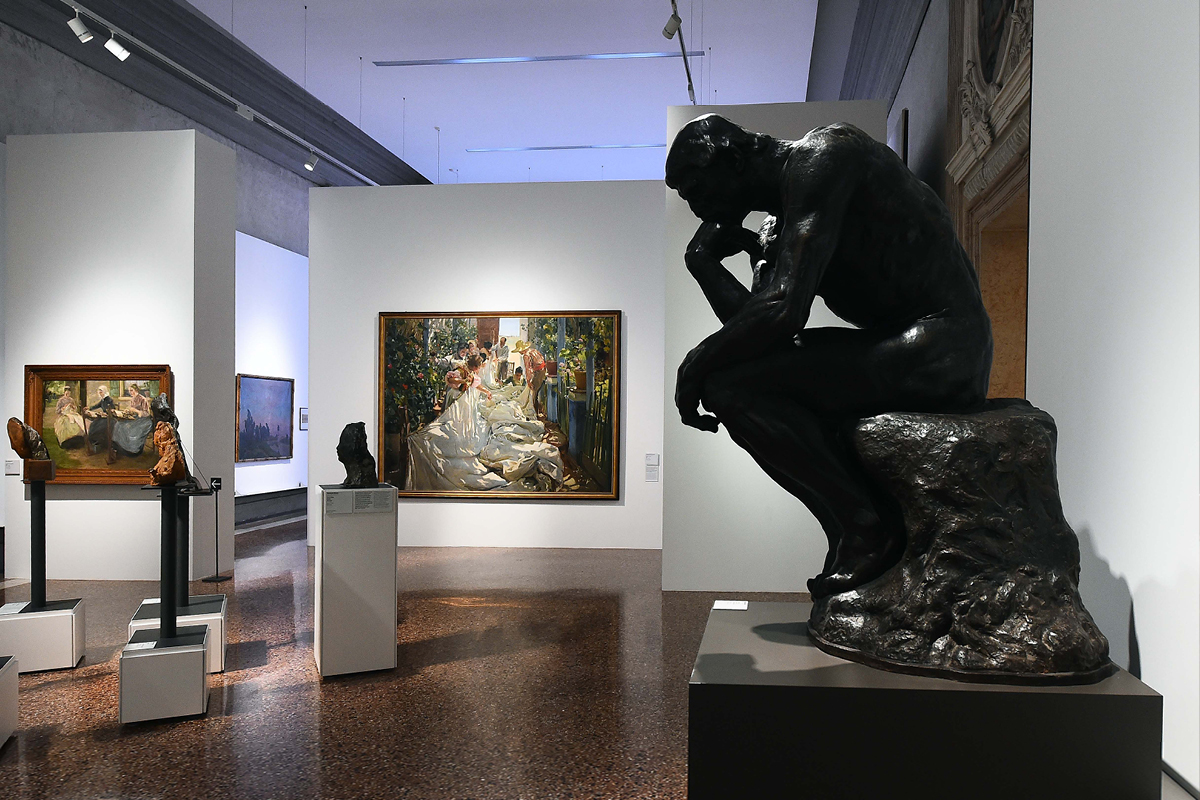
There are many museums to see in Venice, especially if you want to learn more about the city’s history and art. On this page I have collected all the useful information for your visit, in particular the advantageous solutions for buying tickets and cards.
Venice Museums: tickets to buy in advance online

During a holiday, we would like to think of everything except spending our precious time in line for an entrance ticket. Rather, I find it very convenient to already have reservations for those museums that I absolutely do not want to miss. Even for Venice, there are various options for buying museum tickets online, often with advantageous opportunities that combine a visit to several attractions.
DUCAL PALACE
The Doge’s Palace is the symbol of Venice. It is a building that dates back to the 9th century, but retains traces of the city’s long history in its capitals, columns, decorations and every hidden corner. The palace we can admire today dates back to the 14th century and is connected to the Prigioni Nuove by the famous Bridge of Sighs. Recently, the exhibition itinerary has been enriched by the possibility of entering the Doge’s Apartment, where there are paintings, sculptures, artefacts and texts that help the visitor retrace the history and anecdotes of the city.
Check now in the calendar below for availability on the days you want to visit the Doge’s Palace. Of the various alternatives, I think the one that combines a visit to the palace and to St Mark’s Basilica is one of the best: both museums are worthwhile and give an insight into Venice’s past, especially if you are here for the first time.
BASILICA OF SAN MARCO
St Mark’s Basilica is located in the famous square of the same name, right next to the Doge’s Palace. It is the oldest church in Venice and a treasure chest full of treasures and wonders. The building is a masterpiece of architecture combining Byzantine, Romanesque and Gothic elements, but its interior is no less impressive: priceless mosaics and goldsmith’s artwork testify to the city’s greatness throughout the ages. Famous is the Pala d’Oro, a particularly valuable gold artefact, which can also be seen with a separate ticket. If you are not afraid of heights, you should also climb the terraces and bell tower: the view of Venice is unparalleled.
If you want to take the opportunity to get an overall taste of the city, you can combine the entrance to the Basilica with a romantic gondola ride, which always has its charm.
EIGHTEENTH-CENTURY VENETIAN MUSEUM – CA’ REZZONICO
The city’s most important families contributed to the image of a sumptuous and opulent Venice by building spectacular palaces, and Ca’ Rezzonico is one of them. The museum currently presents the best that Venetian art was able to express in the 18th century: must-sees include the pastel portraits in the hall of the same name; the group of frescoes in the Hall of the Wedding Allegory, by Giambattista Tiepolo; the Portego of paintings, with works by artists such as Francesco Guardi, Giambattista Piazzetta, Canaletto and Gaspare Diziani, as well as works by the painter Pietro Longhi.
GUGGENHEIM COLLECTION IN VENICE
Peggy Guggenheim played a decisive role in the history of 20th century art and was convinced that it was her duty to protect the art of her time. She lived a life for art, discovered and supported many artists, was the friend and lover of the most important artists of the last century, and created the world’s most comprehensive and important collection of 20th century art.
The Peggy Guggenheim Collection in Venice holds the works she loved and collected in her home overlooking the Grand Canal. You can choose from tickets that allow you to skip the line at the entrance or add a dedicated guided tour. You can choose from tickets that allow you to skip the line at the entrance or add a dedicated guided tour. There is also the possibility of purchasing a combined ticket, with which you can also access the Scala Contarini del Bovolo and admire Venice from above.
ACADEMY GALLERY
The Accademia Gallery houses a truly diverse collection and some works are a must during a visit to Venice. These include Titian’s La Pietà; Levi’s Supper in the House and Giorgione’s Tempest. In addition, the museum holds the most important collection of plaster casts by Antonio Canova in Venice, donated by the artist for educational use.
Other alternative places and museums to visit in Venice
Besides the main museums – which are certainly the pride of this city – there are many palaces and museum spaces in Venice that are worth a visit. They allow you to explore lesser-known stories and appreciate less central but equally beautiful areas.
GIORGIO FRANCHETTI GALLERY AT CA’ D’ORO
Although not one of the most visited museums, the Galleria Giorgio Franchetti is a hidden treasure of the city. It is located in a historic building and among the works on display are Mantegna’s Saint Sebastian and Titian’s Venus at the Mirror. Usually with the ticket of Ca’ d’Oro you can also access the temporary exhibition.
CA’ PESARO
Ca’ Pesaro, a charming Venetian residence, houses the International Gallery of Modern Art, originally designed to house the artists of the Art Biennale. The collection boasts masterpieces by extraordinary artists, such as Klimt’s Judith II, an extraordinary work of art symbolising the Art Nouveau movement; Sorolla’s Sewing the Sail and Rodin’s The Thinker. The ticket also gives access to the rooms of the Oriental Museum.
CORRER MUSEUM
In this museum you will find the Royal Rooms and the Neoclassical Rooms. The Sale Reali (Royal Rooms) allow you to immerse yourself in the court life of some of the most important families in history, including Bonaparte, Habsburg and Savoy. Among the Neoclassical Rooms, the Canovian Collection, rich in models and sketches by the Neoclassical sculptor, is not to be missed.
THE PHOENIX THEATRE
The Teatro La Fenice has seen some of the world’s greatest operas and is a temple for lovers of opera and music in general. You can visit with a ticket that not only lets you skip the queue at the entrance, but also gives you access to the foyer, the stage and the Sale Apollinee. The theatre also hosts an exhibition on Maria Callas’ Venetian years. If the world of music fascinates you, you will be pleased to know that it is possible to combine a visit to the theatre with a unique experience: a string concert in the Chiesa della Pietà, better known as the Church of Vivaldi.
MURANO GLASS MUSEUM
To visit the Murano Glass Museum is to delve into one of the island’s most celebrated craft traditions. It was founded at the end of the 19th century as an archive of the island’s history, but over time it began to collect more and more glass objects. Today it is part of the city museums of Venice, with antique glass and more contemporary objects: it is worth a visit if only to marvel at the Renaissance-era Coppa Barovier. A visit to the museum can be the occasion for a fun boat tour around the islands of Murano and Burano; alternatively, you can watch glass blowing directly in the workshops.
SCALA CONTARINI DEL BOVOLO
An arched staircase rises 28 metres high, with 80 steps, from the top of which you can admire Venice from above. It is part of the palace of the same name, a splendid example of Gothic and Renaissance architecture. The ticket will save you from a tedious queue and will also give you access to the Oratorio dei Crociferi, which houses paintings by Palma il Giovane.
BORGES’ LABYRINTH ON THE ISLAND OF SAN GIORGIO
Opened to the public a few years ago, the labyrinth is a collection of thousands of woodland plants inspired by the 20th century writer Jorge Luis Borges. Inside, there are numerous symbols inspired by the Argentine author’s books and it is an original place to see in Venice. Behind the curious labyrinth is the hand of architect Randoll Coate. The ticket also gives access to the New Manica Lunga and the audio guide includes a pleasant musical accompaniment. To delight you with the beauty of the island, there are complete tours that also take you to the Vatican Chapels.
Venice Museums: cards and passes you should have in your pocket
Visiting Venice is beautiful but it also means finding your way around many museums and understanding how the public transport system works. In fact, in Venice you can only get around on foot or by boat. Here are the cards and passes you must have to visit Venice without any problems.
VENICE DIGITAL PASS
The key to accessing Venice’s most important sights and getting around the city with peace of mind is called the Venice Digital Pass. The Pass allows you to see St Mark’s Basilica and its terraces, enter the Doge’s Palace in Venice with an audio guide and take a gondola ride, as well as giving you a 10% discount on other museum tickets to see in the city.
The Venice Digital Pass is the card you must have if you have little time to visit the city, if you are going to Venice for a weekend or if you don’t want to waste time booking tickets for the most important museums.
TICKETS FOR GETTING AROUND VENICE BY PUBLIC TRANSPORT
The best way to get around Venice is to use public transport, i.e. get on the famous vaporetti but, if you are staying in Mestre for example, also on the public buses. You can buy a single ticket valid for 24 hours, 48 hours, 72 hours or 7 days to use public transport in Venice: it will save you a lot of time and also a lot of money.
Included in the Venice Public Transport single ticket is:
- unlimited use of public transport (waterbuses and ACTV buses) in the city of Venice;
- unlimited use of waterbuses and buses on the Lido, on the islands of the lagoon and on the mainland (Mestre, Marghera);
- unlimited use of trains in the city of Venice (only if you select the 1-day Ticket + Trenitalia option).
Transport to and from Marco Polo Airport is not included.
AIRPORT-VENICE TRANSFER AND GONDOLA RIDE TICKETS
There are other ways to get around Venice. There is the transfer from the airport to Venice, which is done by a special shipping company and then there is the classic Gondola ride. You cannot leave Venice without taking a Gondola ride, which allows you to see the city exactly like Casanova.
VENICE BOAT TOUR
You cannot visit the islands of Venice, such as Burano and Murano, or go to the Lido, where the beach is and where the Venice Film Festival takes place every year, without travelling by boat. Here’s what you need to book to get around and discover Venice and its lagoon.
Now all you have to do is book your trip and go! If you want to virtually explore the city a bit more, also read my article on churches to see in Venice.

